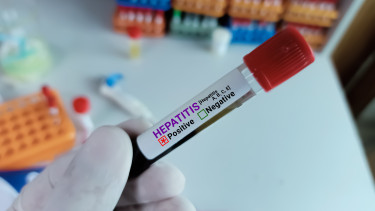Hungary awaits Delta variant completely ‘at ease’

Hungary halves stringency in just a few days
As of 3 July, there were major changes in the restrictions meant to contain the spread of the coronavirus as the government lifted nearly all measures after Hungary reached 5.5 million first vaccinations. Wearing masks is now not required with a few exceptions, not even in stores or on public transport, the immunity certificate is only needed to enter mass events, and the number of customers in stores is no longer limited..
According to the stringency index compiled by Oxford University, which measures the strength of restrictions on a scale of 0 to 100,
the index fell to 27,78 from 49,07 at the end of June.
This means that Hungarians now live with the fewest restrictions since the early days of the pandemic in March 2020.
As the graph below shows, Hungary eased restrictions about one month earlier than last summer, ad in bigger and bolder steps. This is because the number of vaccinations kept rising nicely until late May, although this curve has since flattened considerably.
This could be interpreted in one of two ways regarding Hungary’s pandemic outlook:
- The relatively early and large-scale re-opening, which the government justified by the relatively fast increase of vaccinations, could benefit the economy as more people can access services (no immunity certificate required) and there is more purchasing power in stores and in retail in general. This will help consumption pick up faster, while the message sent by the re-opening can also help restore confidence. As a secondary effect, budget revenues from VAT and personal income tax will also be higher.
- The other reading is that while the Delta variant is rewriting the pandemic situation in Europe and across the world, Hungary is among the “loosest” countries in this critical moment. This is not a good sign with regard to pandemic outlook, especially since experts and government officials now agree that the fourth wave of the pandemic will reach Hungary. Meanwhile, the willingness to get vaccinated has decreased spectacularly and Hungary’s vaccination drive has come to a halt, which is why the government has announced a new campaign. If Hungary cannot increase vaccination coverage before the fourth wave begins in earnest, it will be that much more severe. The government based its re-opening strategy on the initial swift rise in vaccination uptake, but recent developments may undermine this.
Hungary among the least stringent countries globally
According to Our World in Data, which ranked 180 countries, Hungary is the 20th most stringent, which places it in the upper tenth of looser countries. However, within Europe
Hungary has the least amount of restrictions in place after Iceland.
While most European countries eased restrictions starting from April, Hungary is an outlier. The European Centre for Disease Prevention and Control (ECDC) said in its latest threat assessment brief late in June that it estimates that due to its transmission advantage, the Delta variant will be the cause of 70% of new SARS-CoV-2 infections in the European Union by early August and 90% of infections by the end of August. The ECDC cautioned health authorities, especially since European countries have started easing restrictions.
The 22-point drop in Hungary’s stringency index since the end of June is also outstanding and is the biggest drop in Hungary so far.
The ECDC’s experts made model calculations and analysed several scenarios of how the pandemic curve will be affected by the spread of the Delta variant in Europe (infections per 100,000 people) if countries ease restrictions to varying degrees in the reference period between 24 May and 31 August.
The ECDC outlined four different scenarios of NPI (non-pharmaceutical interventions) relaxation:
- continuation of today's stringency of NPIs (grey);
- a gradual 50% reduction in the stringency of NPIs by 1 July 2021 (green);
- a gradual 50% reduction in the stringency of NPIs by 1 September 2021 (blue);
- a gradual reduction in the stringency of NPIs up to 100% by 1 September 2021 (orange).
Hungary’s stringency index was 49 at the end of May and 27 in early July, which translates to a 45% reduction. Of the ECDC’s scenarios, the closest match is the green line (although with a 3 July date instead of 1 July and 45% instead of 50%). This means that if we accept the ECDC’s models and calculations, Hungary will face a substantially big next wave. It is important to note that the ECDC’s graph is for all of Europe, which means it uses the average European vaccination rate. Hungary is slightly above the EU average in first vaccinations and 16 percentage points above the average in second jabs. This means that while the graph below serves as a general guideline, it cannot be used analogously for Hungary.

Prevention and expected reactions in Hungary
Future changes in Hungary’s stringency index, and therefore the duration of the current nearly-free life will be determined by the development of the pandemic curve, and vice versa. Statements by government officials in recent days suggest that the virus will spread faster in Hungary (in agreement with the ECDC calculations above), but the next wave will be different due to vaccinations as the virus will primarily attack non-vaccinated people. The big question is the reaction of the government. If it chooses to emphasise preventing the next wave (and the accompanying lockdown), it will have to solve two complex tasks at the same time:
- It is of primary importance to strengthen the current protection capabilities resulting from vaccines, which would require targeted programmes to speed up vaccination rollout again.
- Active pandemic management and methodical virus variant tracing: identifying local outbreaks in time and containing these with effective measures.
If prevention is out of the question because the virus is spreading exponentially, in which case tracing contacts and breaking infection chains will become very hard, any reaction by the government to worsening trends will be to protect the unvaccinated (or at least will be communicated as such).
A logical first step could be assigning greater importance to immunity certificates again and requiring the wearing of face masks in more locations or situations. In addition, recent European examples suggest that travel bans could also be in the government’s arsenal if needed.
Cover photo: MTVA/ Tibor Oláh










